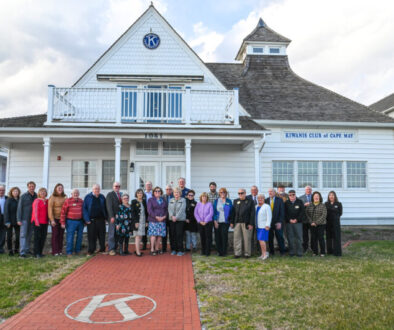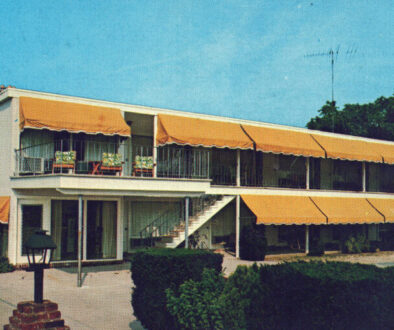Woodford Cedar Run Wildlife Refuge

When wild animals are hurt or orphaned, they have little hope of survival without a bit of help from their (human) friends. For many years, New Jersey wild things had a true friend in school teacher Betty Woodford, whose influence lives on at the sanctuary that bears her name.
In 1951, Betty and her husband Jim, also a teacher, bought 185 acres of unspoiled Pine Barrens as a summer retreat, and eventually made it their year-round home. Enamored of the area’s natural splendor—and the beauty and fragility of its inhabitants—Betty became a self-taught botanist, naturalist, and photographer.
Living so close to nature, Betty’s adventures in rescue were probably inevitable. Her first patient was an injured great horned owl, which she nursed back to health. That began a lifelong commitment to wilderness preservation, environmental education, and animal rescue.


In the 1980s, the Woodfords and their daughter Jeanne made it official, establishing Cedar Run Wildlife Refuge as a nonprofit. In 1997, state lawmakers made it permanent, with a Green Acres grant to protect the land for future generations. Now, Cedar Run receives no government funding, and relies solely on public donations for its work.
My family visited as a group, three generations coming from three directions. The sunshiny day was perfect for exploring the center’s labyrinth of forested trails, crossing its streams and waterways on wooden bridges and boardwalks, and gliding in a canoe on a cobalt-blue lake.
The experience was fun, educational, and interactive. There were signs posted on the woodland paths to identify native flora and fauna. We also came across an “Air Bee and Bee Bug Hotel,” a San Simeon made of sticks and leaves to provide shelter for nesting or hibernating insects. The young members of our party found it all quite fascinating; for the grownups, it was a restful getaway in a setting of quiet beauty.
But make no mistake, this is a jumping place. Each year, Cedar Run provides nature and STEM-based classes for more than 30,000 area students and Scouts, teaching future environmentalists through hands-on experience in the field. Educators travel to schools through the center’s Refuge on Wheels program. And in the summer, kids can attend week-long “Go Wild” summer camps.
Amid it all, Betty’s lifesaving legacy continues. Early on, Cedar Run rescued several hundred animals a year. Today, its onsite rehabilitation hospital takes in more than 6,000 injured or orphaned animals annually.
“The bulk of them are babies: a lot of squirrels, possums, baby birds, and fawns,” says director of education Erin Kiefer Rounds. “Whenever possible, rehabilitated adults are returned to their original territories, where they might have mates and families.”


Creatures that can’t be released due to injury find a permanent home at the refuge, where they serve as animal ambassadors—like Ember, a disabled red fox; Shiva, a blind red-tailed hawk; Hallie, a flight-impaired bald eagle; and Phoebe, a skunk from a breeding farm whose scent glands were removed, leaving her defenseless against predators.
Other permanent residents include white-tailed deer, box turtles, snakes, and a pair of gray squirrels named Mike and Ike, who imprinted on their human handlers and would be hard-pressed to survive in the wild. There’s also a very talkative fish crow named Crogin, who greets you from her enclosure with a friendly “Hi!” Who knew that crows could talk?!
Perhaps the most unusual resident was an American mink. Yes, minks are commonplace in New Jersey, but are nocturnal and, for obvious reasons, prefer to keep a low profile.
The calendar here is chock full of special events: bird walks, yoga classes, plant sales, night hikes, Citizen Science programs, and virtual classes in topics like “wildscaping,” planting native shrubs and flowers to support bird, animal, and insect populations. For adults, there are occasional “craft-and-sip” art programs. The refuge is also available for birthday parties and other private celebrations, like weddings (a ceremony here would be heavenly). The center’s biggest annual fundraiser, Wine & Wildlife, will take place on Saturday, July 13. Tickets are $125.
“There’s always something going on,” says Keifer Rounds. “But don’t miss visiting the resident animals, they’re always great to see up close.”


During the pandemic, Cedar Run suffered a critical loss of revenue streams, even as its animal population exploded. The board of directors, led by co-founder and president Jeanne Woodford, struggled to maintain staff, and continue their rescue mission. That’s when Jeanne rescued a baby great horned owl, the same kind of bird that inspired her mother’s work back in 1957.
Maybe it was a sign. Both the owl and the organization survived, ensuring that thousands of imperiled animals and birds will survive, return to their homes in the Pine Barrens and keep the “garden” in Garden State.
Woodford Cedar Run Wildlife Refuge is open daily from 10am to 4pm. Admission is $10 for guests 13 and older; $5 for children from four to 12 years of age; and free for kids three and under. We had a wonderful visit and we recommend it to you and your family.



